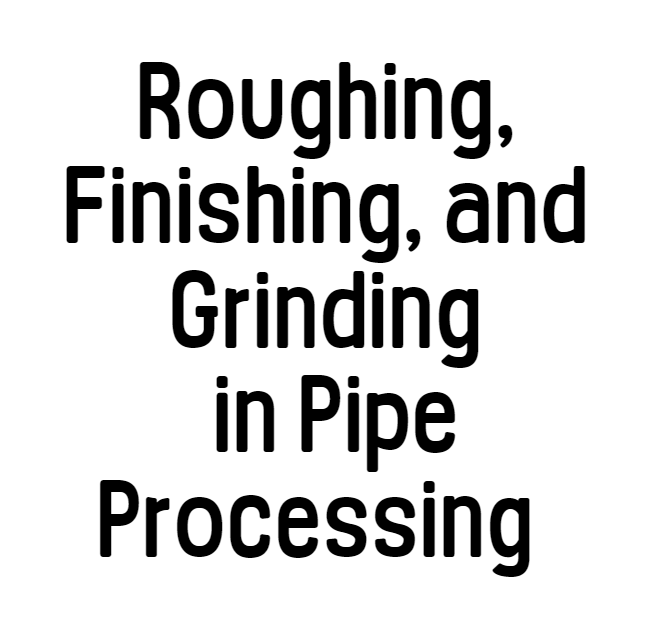-
About
-
Our Brand
-
Products
-
Community
Community
Blog
Blog
Roughing, Finishing, and Grinding in Pipe Processing
- Writer
- STEELTOPIA
- Date
- 24-07-26
Differences Between Roughing, Finishing, and Grinding in Pipe Processing
Introduction
In the pipe processing industry, various techniques are employed to achieve the desired shape, dimensions, and surface finish of pipes. Roughing, finishing, and grinding are three critical stages in this process, each with distinct purposes and characteristics. Understanding these differences can help in selecting the appropriate method for specific applications, ensuring efficiency and quality in production.
1. Roughing
Purpose and Characteristics:
- Initial Shaping: Roughing is the first stage of pipe processing, aimed at removing large amounts of material quickly to approximate the desired shape.
- High Material Removal Rate: This process is designed for high material removal rates, which means it is faster but less precise compared to finishing and grinding.
- Tool Durability: Roughing tools are typically robust and designed to withstand high cutting forces.
Applications:
Preliminary Shaping: Used in the early stages of manufacturing to prepare pipes for more precise finishing processes.
Heavy-Duty Applications: Ideal for applications where significant material needs to be removed, such as in the production of large-diameter or thick-walled pipes.
Tools Used:
Large Cutting Tools: Tools like roughing end mills, large lathe tools, and heavy-duty saws are commonly used.
High-Power Machines: Machines with high horsepower are employed to handle the high cutting forces.
2. Finishing
Purpose and Characteristics:
- Precision Shaping: Finishing follows roughing and is aimed at refining the shape and dimensions of the pipe.
- Moderate Material Removal Rate: It removes less material compared to roughing, focusing on achieving tighter tolerances and a smoother surface finish.
- Improved Surface Quality: The primary goal is to improve the surface quality and ensure the pipe meets specific dimensional criteria.
Applications:
- Dimensional Accuracy: Used when precise dimensions are crucial, such as in pipes that must fit exact specifications for assembly.
- Surface Preparation: Prepares the pipe surface for further processing or finishing treatments like coating or plating.
Tools Used:
- Smaller Cutting Tools: Tools such as finishing end mills and fine lathe tools are employed.
- Precision Machines: Machines with precise control over cutting parameters are used to achieve the desired accuracy.
3. Grinding
Purpose and Characteristics:
- Final Surface Finish: Grinding is the final stage of pipe processing, aimed at achieving an ultra-smooth surface finish and fine-tuning dimensions.
- Very Low Material Removal Rate: It removes a minimal amount of material, focusing on achieving the highest level of precision and surface quality.
- Abrasive Action: Grinding uses abrasive tools to achieve a high level of finish and accuracy.
Applications:
- High Precision Requirements: Used when the highest levels of precision and surface finish are required, such as in medical or aerospace applications.
- Surface Defects Removal: Ideal for removing surface defects and achieving a polished look.
Tools Used:
- Grinding Wheels and Belts: Various types of grinding wheels, belts, and discs are used, depending on the specific requirements.
- Specialized Grinding Machines: Machines designed for high precision and control, such as cylindrical grinders and surface grinders.
Conclusion
Roughing, finishing, and grinding are integral stages in pipe processing, each serving distinct purposes to ensure the final product meets the desired specifications. Roughing quickly removes large amounts of material, finishing refines the shape and dimensions, and grinding achieves the highest level of surface finish and precision. By understanding these differences, manufacturers can optimize their processes to produce high-quality pipes efficiently.



 HOME
HOME